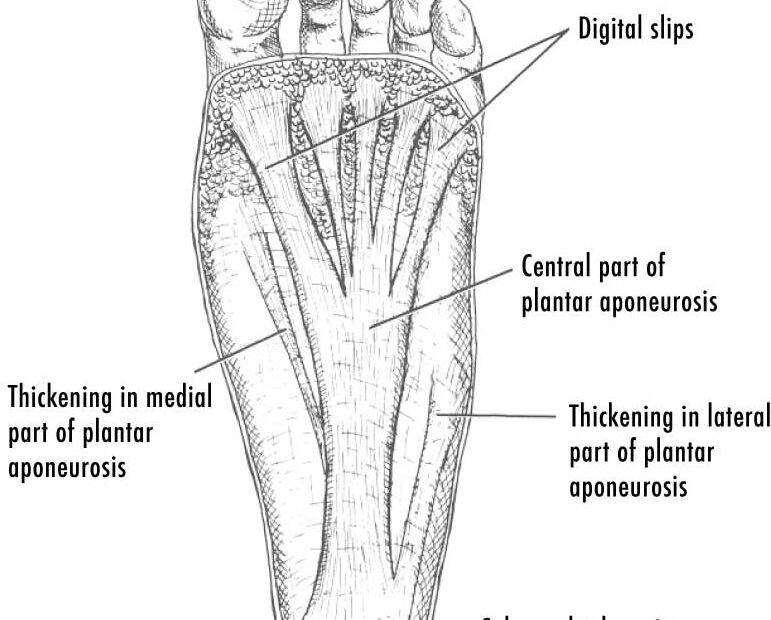What is the Plantar Fascia?
The “Plantar Fascia” is a thick fibrous band of connective tissue (ligament) found at the sole (bottom) of the foot and connects the heel bone to the toes. This connective tissue is attached to the heel bone called the (calcaneus) and divides and spans out to attach at the base of the toes, where the bone between each toe and the bones of the mid foot are.
The plantar fascia functions as a cover for layers of muscles, tendons, nerves, and blood vessels found at the bottom of the foot where it covers these layers and helps the bones of the foot maintain their arch. A fat pad is found covering the plantar fascia right beneath the heel bone. This pad acts as a cushion to the heel as it absorbs the shock of every footstep.
What is pain in the Plantar Fascia (Plantar Fasciitis)?
Pain in the plantar fascia is known as “Plantar Fasciitis”, a term used to cover the condition that involves pain and inflammation of the plantar fascia. Symptoms include stabbing pain that usually happens with the first morning steps at the underside of the heel. The pain diminishes with movement, however, long stands or standing up after being seated for a while may trigger an intense pain. The pain may also arise with climbing stairs.
Plantar Fasciitis is a very common condition that could cause a lot of pain if not attended to in the right way. Certain conditions make people susceptible to plantar fascia, these include increased activities as with runners and especially when running on hard surfaces, being overweight, old age and those who wear shoes that do not provide ample foot support. Depending on the cause and extent of pain, sometimes home rest and the use of painkillers can help reduce the pain but if the pain persists medical intervention is required.
What are the causes of Plantar Fascia Pain/Plantar Fasciitis?
Medicine has not arrived at a decisive conclusion regarding the causes of plantar fasciitis or plantar fascia pain. However, it is thought to be a result of repeated small tears, stress or strain due to the way the patient walks along with other conditions; these include:
- Abnormal Inward Twisting of the Foot (Excessive Pronation):
Excessive PronationThis is a condition where the weight of the patient’s body stays on the inner edge of the foot sole as opposed to the normal pronation where the foot lands on the outer side of the feet first during walking. Excessive pronation is seen when the patient is standing up, the foot appears rolled inward which accordingly makes the foot arch flatten causing plantar fasciitis.
- Repetitive Activities:
Certain repetitive activities may also cause plantar fasciitis. These activities could be sports related such as running, or work related such as long standing times or walking on irregular ground surfaces.
- Obesity or Being Overweight:
Being overweight adds extra stress to the feet and may in time particularly if the patient wears uncomfortable shoes or shoes that don’t properly support the foot lead to plantar fascia pain.
- Aging:
Plantar Fasciitis is most commonly seen with patients of middle age and older. The natural aging process with the wear and tear of the plantar fascia may in time cause plantar fasciitis.
- Heel Spurs:
Heel spurs are often connected with plantar fasciitis. A heel spur is generally caused by the deposit of calcium at the bottom of the heel bone. The protrusion of a heel spur can stretch forward by approximately half-inch and is detected by an X-ray.
Kindly call us 01277549029 for diagnosis and consultation.
You can contact us for any questions regarding Ultrasound injection treatment for Plantar Fasciitis.
